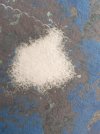- Joined
- May 21, 2022
- Messages
- 31
- Reaction score
- 0
- Points
- 6
- Age
- 36
- Model
- Adventure
While sanding my bottom paint I sanded some areas maybe a little too deep. I believe I took some gel coat off but didn't reach fiberglass. Am I able to just paint new bottom paint and it will be water tight. I dont want to run into any blistering because I didn't seal it. I will try and post a picture if I can. Thanks



